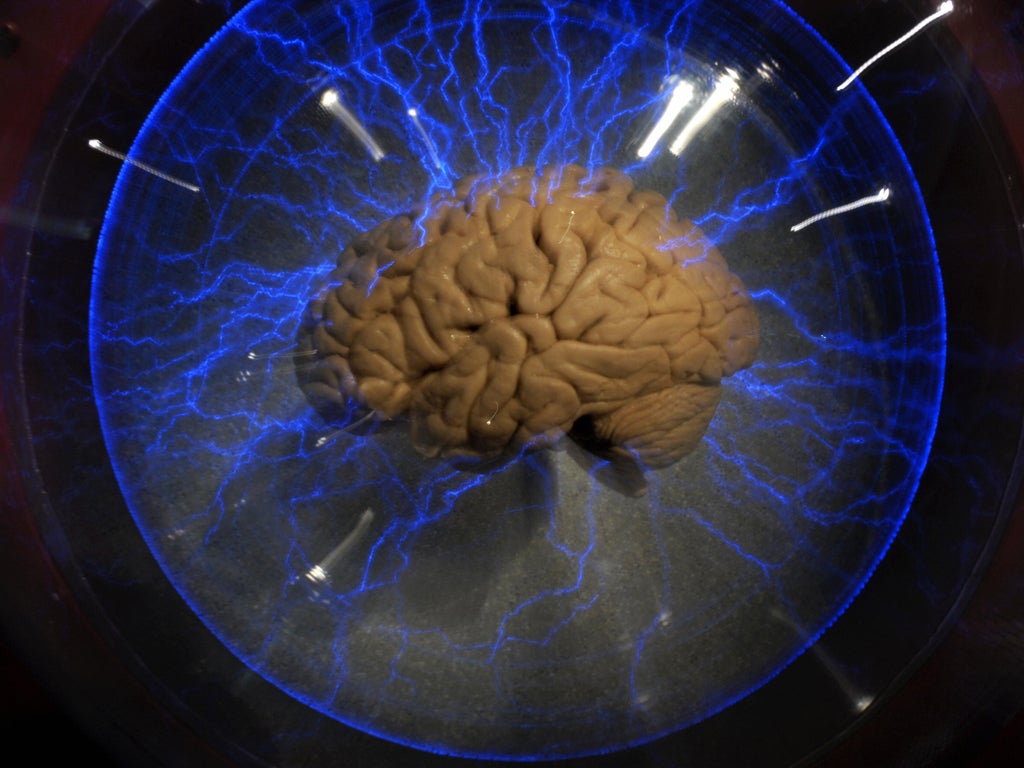The differences between male and female brains: time to reconsider the value of stereotypes?
I’m both a feminist and a female stereotype – so I know that we’re wired differently


Your support helps us to tell the story
From reproductive rights to climate change to Big Tech, The Independent is on the ground when the story is developing. Whether it's investigating the financials of Elon Musk's pro-Trump PAC or producing our latest documentary, 'The A Word', which shines a light on the American women fighting for reproductive rights, we know how important it is to parse out the facts from the messaging.
At such a critical moment in US history, we need reporters on the ground. Your donation allows us to keep sending journalists to speak to both sides of the story.
The Independent is trusted by Americans across the entire political spectrum. And unlike many other quality news outlets, we choose not to lock Americans out of our reporting and analysis with paywalls. We believe quality journalism should be available to everyone, paid for by those who can afford it.
Your support makes all the difference.A pioneering study has proven that the brains of men and women are wired up differently. Nothing fresh there, you might say. The concept of “Those lot, they’re just bloody wired differently” has been been muttered in pubs and in the scribblings of Shakespeare and Eastenders scriptwriters for eons. But here, from the University of Pennsylvania, we have some actual scientific workings.
A brain-scanning technique called “diffusion tensor imaging” has found that many of the connections in a typical male brain run between the front and the back of the same side of the brain, while in women the connections are more likely to run from side-to-side between the left and right hemispheres of the brain. This plays an important role in understanding why some male and female stereotypes have weight. And I stress they’re stereotypes, not slurs.
The two things are very different. The results help explain why men are often seen to be better at spatial tasks involving muscle control, and better at map reading. And why women are often seen to be better at verbal tasks involving memory, intuition, gauging empathy and hidden meaning, remembering words and faces.
Obviously, I’m speaking widely, using big brush strokes and flagging up the word “stereotype” with a marine flare. Some brilliant emotional men couldn’t find their own arse with two hands, let alone map-read their way through the jungles of Borneo. And some incredible women have the emotional snuggliness of a recently prodded awake John McCririck and the natural motherly love of a naughty tabby cat who ate all her kittens, but then that’s stereotypes for you.
Stereotypes are there to speed up speech, to neaten arguments, to oil the wheels of planning and progress. A slur is when you think a stereotype is set in stone without all the “others” and “not applicables” and “don’t knows”. There’s a place, I feel, for respectful stereotypes in any bid for human enlightenment.
And I’ve always suspected there is a place for equality and being “wired differently”, because I’m both a feminist and a female stereotype. My motor skills (or lack of them) are legendary around several British DVLA test centres. I am not allowed in the front passenger seat of the car on group trips because of “issues around losing everyone”. On the times I have held a loaded gun I cannot hit a barn door from 20 metres. Emotionally, however, I can sense that you are upset and pinpoint why even before you can. In a crowded party, I can remember everyone’s names and stories about them dating back 20 years. I have always felt “wired differently” to men, but not better or worse for my skills or deficiencies. For too many years sexual equality has been about women denying any groundings in our stereotype while painting all men as the same. Or men using a non-malleable female stereotype as a means of control.
Interestingly, scientists say the new findings give rise to the idea that male and female stereotypical skills complement each other in a relationship. And lo, the crap drivers found someone to drive them and the emotionally numb found someone who likes to give cuddles and, indeed, they were whole. Glancing at heterosexual divorce figures, I’m not sure about this. In fact, perhaps the findings put a whole new slant on gay and lesbian marriage, which, instead of being merely equal to straight marriage, could now be seen as the top tier of harmonious coupling. Men with men, women with women. All your yin none of your yang. Less wiring, fewer differences, a decrease in angry sparks. And that’s just science.
Twitter: @gracedent
Join our commenting forum
Join thought-provoking conversations, follow other Independent readers and see their replies
Comments